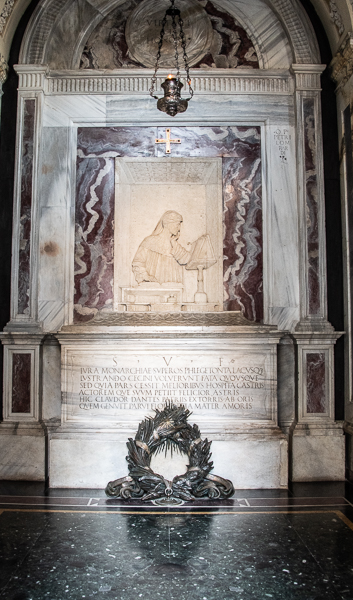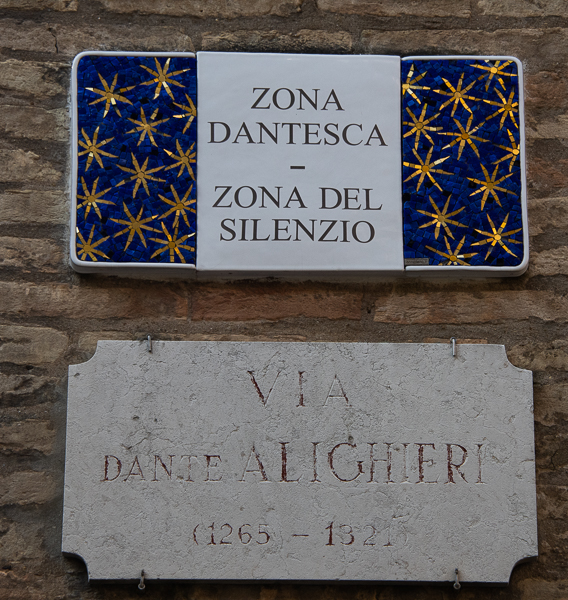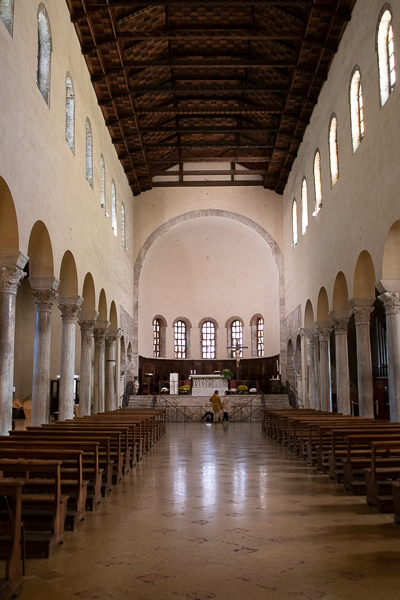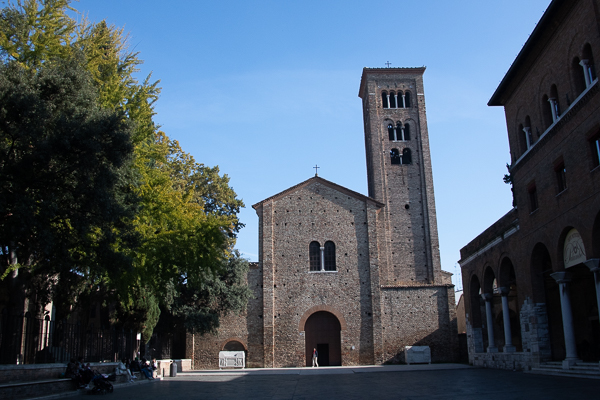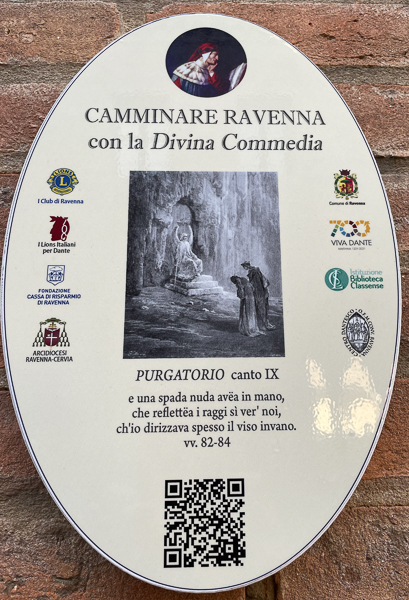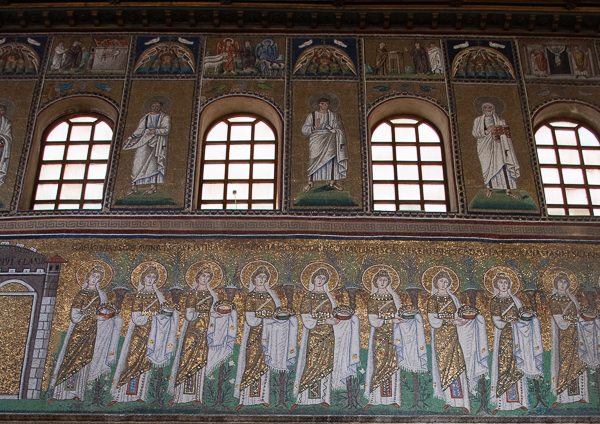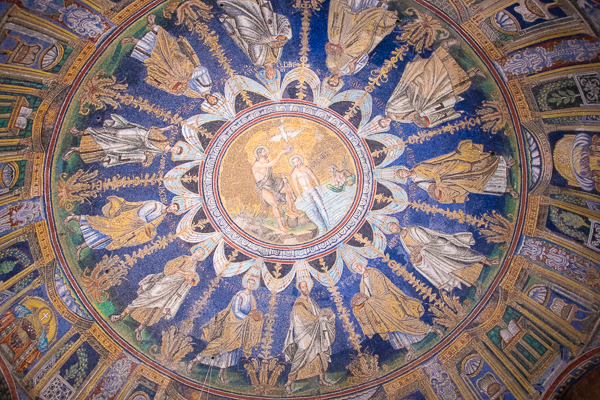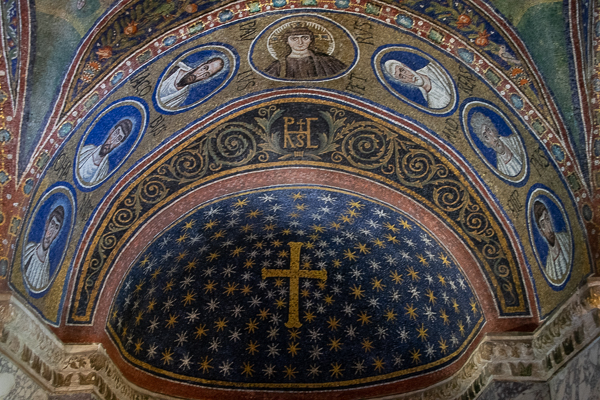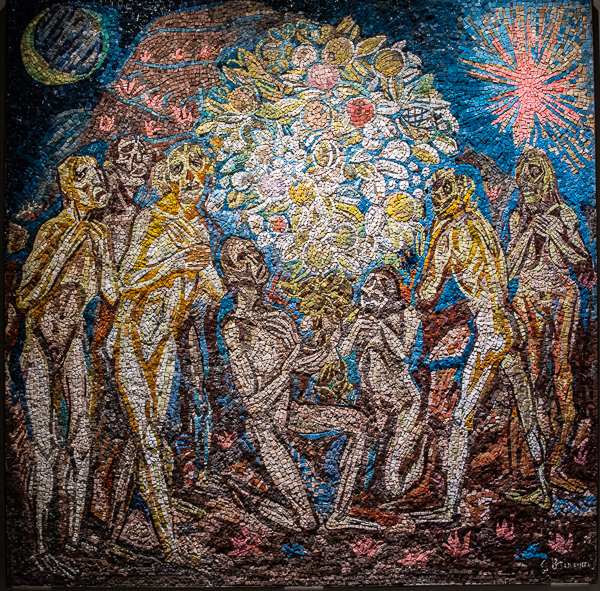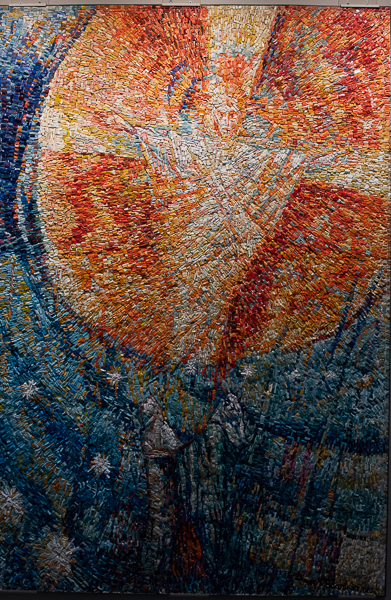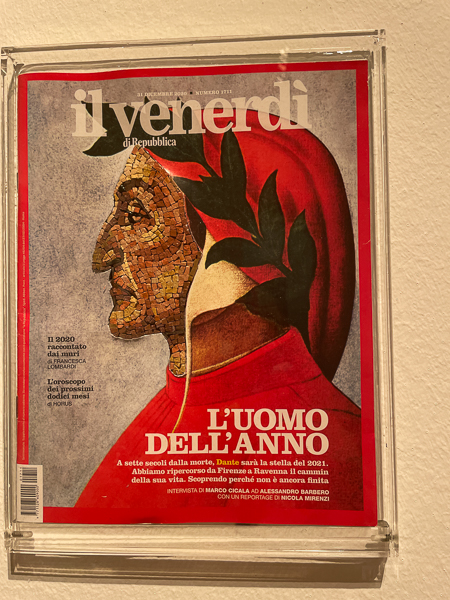November 8, 2022
I am a lover of Dante. I have read Divina Commedia (The Divine Comedy) at a minimum, three times, which means I have only begun to read Dante. I spent lockdown walking in my living room and reading aloud, the best way to read Dante in my humble opinion.
I will admit right here, however, that I have never read it properly, and that would be to read it in Italian.
I trust everyone knows what I am talking about, but if not: The Divine Comedy is an Italian narrative poem by Dante Alighieri. He began writing it in 1308 and finished in 1320, one year before he died. It is considered the pre-eminent work in Italian literature and one of the greatest works of world literature. What many do not know is that it helped establish the Tuscan language, in which it is written, as the standardized Italian language. You may know it better by its three parts, often presented as three different books: Inferno, Purgatorio, and Paradiso.
Dante was born in Florence and he remained devoted to his native city all his life. Dante’s life in Florence was shaped by the long history of conflict between the imperial and papal partisans called, respectively, Ghibellines and Guelfs. I will not go into that long story, that history lesson you will need to learn on your own.
In 1302 Dante was accused of corruption and financial wrongdoing and exiled from Florence for two years after he refused to pay a fine. Shortly thereafter he was banned for life and threatened with execution at the stake or beheading if he returned.
After traveling through Lunigiana, Verona, and Treviso, Dante spent his final years in Ravenna, and I am here to take in the city where he is buried. Ravenna is where Dante spent his last years, taking part in the cultural life of the city and putting the finishing touches on Commedia (the original name of the work).
In this Romagna city, during the night in September 1321, the greatest poet of Italian literature died after a bout of malaria he contracted following a diplomatic mission to Venice.
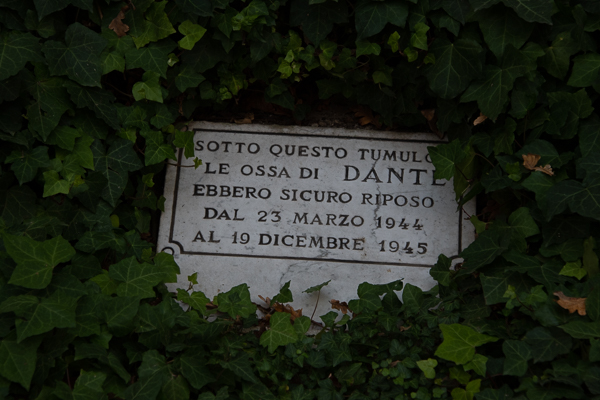
During World War II, the casket containing Dante’s remains was removed from the marble tomb and hidden underground to protect his bones from bombing and looting. However, a small packet of “Dante dust” and impressions taken of his skull can be found in the National Central Library of Florence.
The City of Ravenna has done a lot to tie itself to Dante. You will find plaques all over town with Cantos and a reference to a corresponding building or site.
These are rather speculative, and maybe far-fetched, but anything that helps highlight the work of Dante can’t be all that bad in my opinion. Here are a few of those places and the corresponding Canto. I include them because it gives me a chance to show you some of the most amazing mosaics, the reason most come to visit Ravenna, and also to cite a Canto or two.
As I mentioned I think some of this is far-reaching so I am simply going to quote from the program the city has put together:
The mosaics of two processions face each other on the walls of the Basilica of S. Apollinare Nuovo: that of the Martyrs and that of the Virgins. This iconography seems to have inspired the procession of the twenty-four elders, all dressed in white and wearing wreaths of lilies on their heads who proceed solemnly two by tow in the griffin parade, where Dante meets Beatrice.
This is he who lay upon the breast of our Pelican, who from the cross elected him to bear the heavy charge. Paradiso XXV vv. 112-114
Baptistery, also known as Neonian Baptistery, is the place where the Catholics from Ravenna were baptized. It has been a UNESCO World Heritage Monument since 1996 and it well represents Baptism as the gateway to Faith which Dante mentions in the fourth Canto – here he describes the Limbo of the unbaptized, where Virgilio himself is hosted.
I saw, above the many thousand lamps, a Sun that kindled each and everyone as ours lights up the sights we see above us – Paradiso XXIII vv 28-30
The Sun Dante sees illuminates thousands of other lights is Christ, represented by the Cross “signum gloriae”. This Cross shines in the middle of the apse of the Archiepiscopal Chapel with the starry sky that seems to rotate around it.
As builds from branch to branch throughout the pine wood at the shore of Classe when Aeolus unleashes his Sirocco. – Purgatorio XXVIII vv 19-21
As I said, I think the city is reaching, but it is a fun exploration nonetheless. I will also apologize for the poor quality of the mosaics. The locations they are found in have such low lighting as to make photography difficult, but definitely, heightens one’s sense of awe.
Works Representing Dante at the TAMO Mosaic Museum
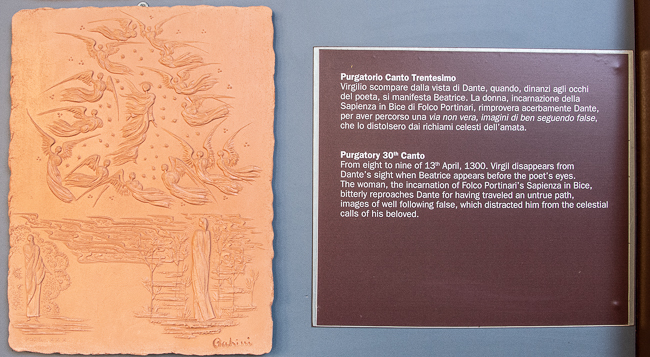
This work by Enzo Babini consists of 35 terracotta medallions and is called “The Way of Dante”.
The pieces highlight the fundamental figures of Dante’s poem; Dante himself, Virgil, and Beatrice.
In the cloisters of the museum is an exhibit titled Mosaics of Inferno and Paradise. It is an exhibition of contemporary mosaic works dedicated to Dante and inspired by a few of the Canti from the Divine Comedy. There are 21 mosaics, created in 1965 by mosaicists from the Ravenna school.
The artists gave a stanza from the Canto they chose, I have given you a bit more than the one stanza to help further understand.
An Excerpt:
The Emperor of the kingdom dolorous
From his mid-breast forth issued from the ice;
And better with a giant I compare
Which unto such a part conforms itself.
And lifted up his brow against his Maker,
Well may proceed from him all tribulation.
An Excerpt:
“Spirits,” said he, “who as they go, perchance,
Their debt of duty pay.” As on their road
The thoughtful pilgrims, overtaking some
Not known unto them, turn to them, and look,
But stay not; thus, approaching from behind
With speedier motion, eyed us, as they pass’d,
A crowd of spirits, silent and devout.
The eyes of each were dark and hollow: pale
Their visage, and so lean withal, the bones
Stood staring thro’ the skin. I do not think
Thus dry and meagre Erisicthon show’d,
When pinc’ed by sharp-set famine to the quick.
An excerpt:
But he who takes his cross and follows Christ
Again will pardon me what I omit,
Seeing in that aurora lighten Christ.
From horn to horn, and ‘twixt the top and base,
Lights were in motion, brightly scintillating
As they together met and passed each other;
Thus level and aslant and swift and slow
We here behold, renewing still the sight,
The particles of bodies long and short,

